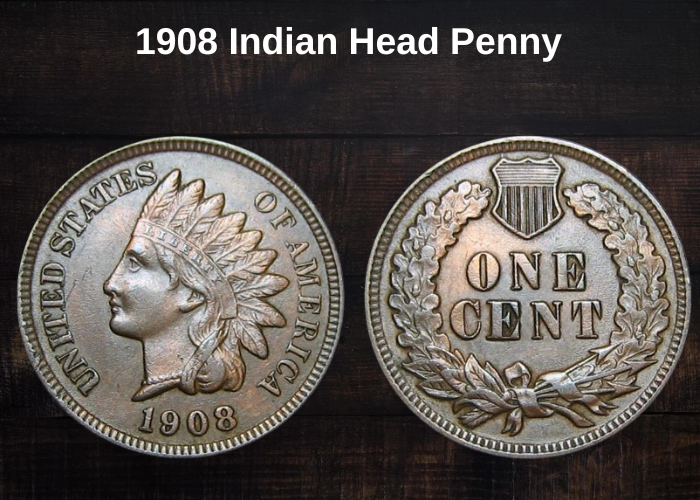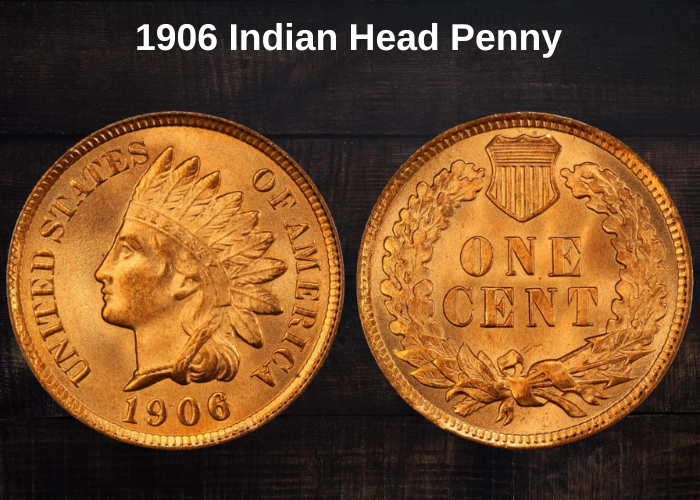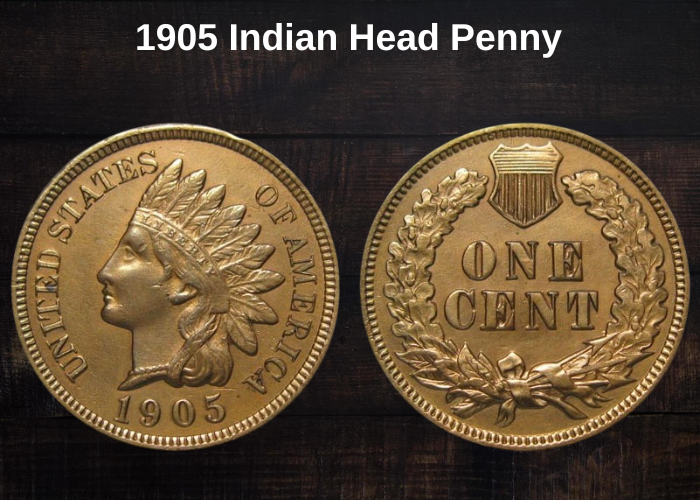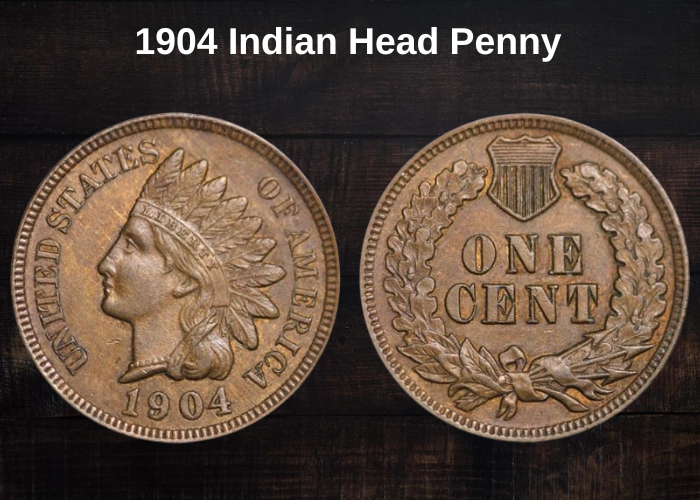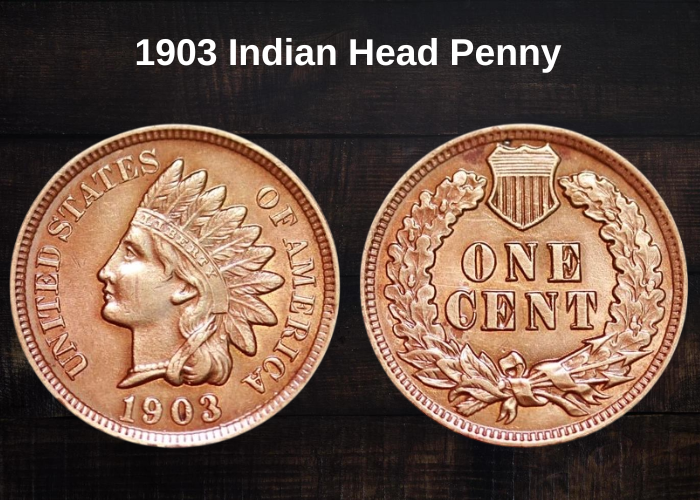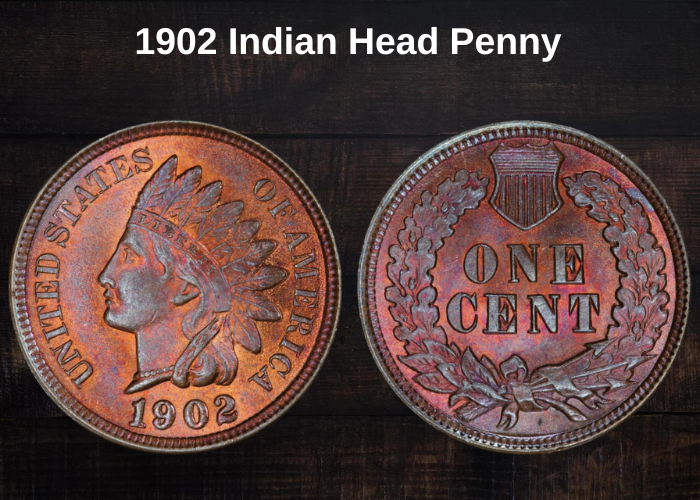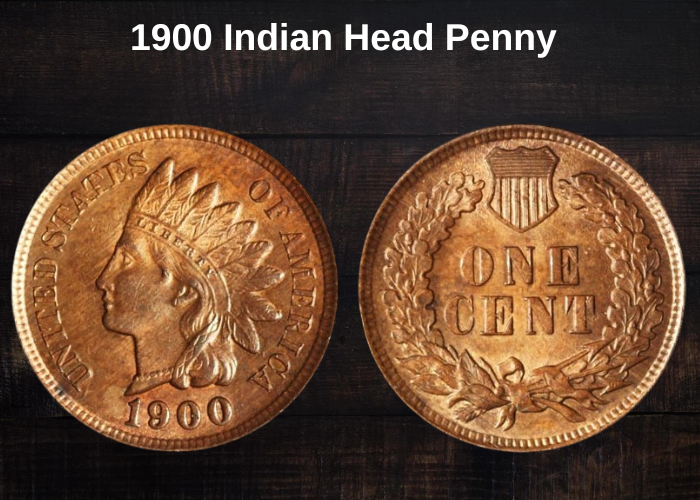The 1909 Indian Head penny is an incredibly significant coin in U.S. numismatics, as it was the last year of production before being replaced by the Lincoln penny. Its low mintage numbers and historical importance make it a sought-after collectible today.
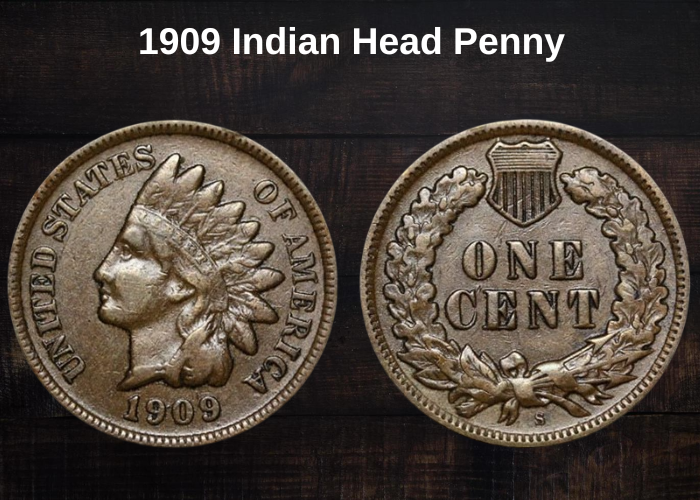
1909 Indian Head Penny Value Chart
| Mint Mark | Good | Fine | Extremely Fine | Uncirculated |
|---|---|---|---|---|
| 1909 (No Mint Mark) Indian Head Penny | $5.25 | $12.50 | $28 | $55 to $450+ |
| 1909 No Mint Mark Proof Indian Head Penny | n/a | n/a | n/a | $155 to $975+ |
| 1909 “S” Indian Head Penny | $350 | $475 | $725 | $1,200 to $2,750+ |
Why is the 1909 Indian Head Penny Valuable?
- Final Year of Issue – Being the last year of production before the Lincoln penny adds to its significance.
- Low Mintage Numbers – Fewer coins were struck in 1909 compared to previous years, making them rarer.
- San Francisco Mint Rarity – The 1909-S Indian Head penny is particularly rare due to its low mintage of just 309,000, making it one of the scarcest Indian Head pennies.
- Proof Versions – The proof Indian Head pennies from 1909 are highly valuable, especially in high grades.
How Much is a 1909 Indian Head Penny Worth?
- Circulated (Good to Extremely Fine condition) coins range from $5 to $725, depending on the mint mark.
- Uncirculated examples can easily sell for hundreds or even thousands of dollars, especially if they have strong luster and minimal wear.
- The 1909-S Indian Head penny in mint condition is worth over $2,750 and even more at higher grades.
Even though these pennies were originally just one cent in value, today they can fetch thousands of dollars if they are well-preserved or have unique attributes.
1909 Indian Head Penny Grading
In numismatics, coin grading is essential for determining a coin’s value. The Sheldon coin grading scale, which ranges from 1 to 70, is the most widely used system to assess a coin’s condition and preservation.
Coin Grading Basics
- Grades 1-50: Coins in this range typically show significant wear.
- Grades 60+: Considered Mint State (MS) or Uncirculated (UNC), meaning they have little to no wear.
- Higher Grades (65-70): These are pristine coins, with MS65 and above being the most desirable.
Grading Chart for the 1909 Indian Head Penny
| Grade Number | Grade Name | Condition |
|---|---|---|
| 1 | Basal State-1 | Extremely worn, barely identifiable. |
| 2 | Fair | Heavy wear, but some design visible. |
| 3 | Very Fair | More detail visible, but still heavily worn. |
| 4-6 | Good | Major details recognizable but smooth. |
| 7-10 | Very Good | Some finer details appear but still worn. |
| 12-15 | Fine | Moderate wear, with some design elements showing. |
| 20-30 | Very Fine | Most details present, but light wear. |
| 40 | Extremely Fine | Sharp details with only slight wear. |
| 50 | About Uncirculated (AU) | Light wear on high points but retains most of its original luster. |
| 60+ | Mint State (MS) | No wear, full details intact. |
| 65+ | Mint State Choice (MS65-MS70) | Near-perfect coin, highly sought after by collectors. |
How to Determine the Exact Value of Your Coin
If you have a 1909 Indian Head penny, checking its grade is the first step to knowing its worth. Higher grades mean higher value, with MS65 or MS70 coins commanding premium prices.
Would you like guidance on grading your coin, or do you need recommendations for professional coin grading services?
1909 No Mint Mark Indian Head Penny Value
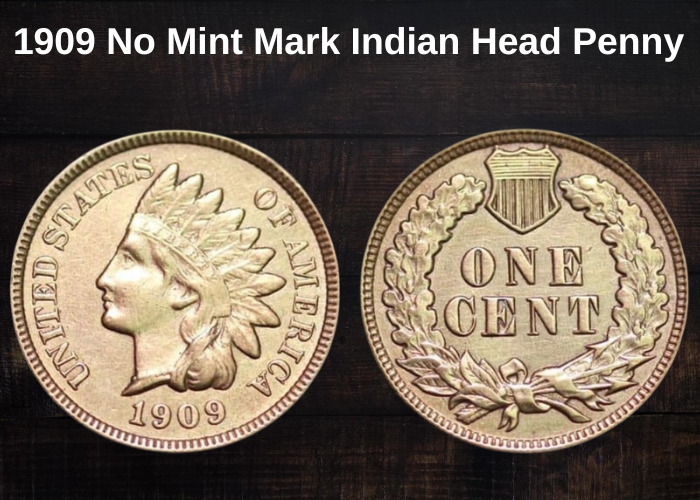
Right! The 1909 Indian Head penny (no mint mark) is historically significant because it marks the final year of the Indian Head series before transitioning to the Lincoln cent. However, while its mintage of 14,368,470 was lower than usual for Philadelphia-minted Indian Head pennies, it isn’t considered exceptionally rare—at least in circulated conditions.
Key Takeaways on the 1909 (P) Indian Head Penny:
- Mint Location: Philadelphia (no mint mark)
- Mintage: 14,368,470 (lowest since 1885)
- Composition: 95% copper, 5% tin and zinc
- Design: Identical to previous years; features Liberty in a Native American headdress on the obverse and an oak wreath with a shield on the reverse.
- Significance: Final year of Indian Head penny production before the Lincoln cent replaced it.
Is It Valuable?
- Common in lower grades (Good to Extremely Fine).
- Uncirculated examples (MS60+) are valuable, especially those with full red luster (MS Red).
- Proof versions are significantly rarer and worth more.
Would you like details on pricing for different conditions or information on spotting a proof version?
1909 Indian Head Penny Feature
That’s a great breakdown of the 1909 Indian Head penny (Philadelphia Mint)!
Key Value Insights:
- Circulated Condition: Even well-worn coins can sell for $5–$10, which is 1,000x its original value.
- Uncirculated Condition (MS 60–65): Prices jump into the hundreds or even $1,350–$1,700 for high-grade examples.
- Top-Tier Condition (MS 67 Red): The highest known example sold for $21,600 in 2023!
Factors That Affect Value:
- Color Grading:
- Brown (BN) – Common, lower value
- Red-Brown (RB) – More desirable
- Full Red (RD) – The rarest and most valuable
- Condition/Grade:
- Worn coins = lower value
- Mint State (MS 60–67) = Big money
- Proof coins = Extremely valuable
Would you like grading tips or help identifying whether your coin might be a proof or a high-value specimen?
1909 No Mint Mark Proof Indian Head Penny Value
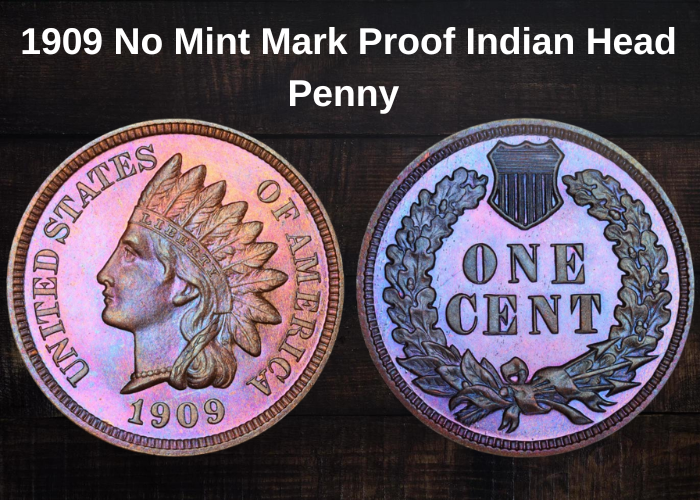
The Philadelphia Mint produced a tiny batch of 2,175 proof Indian Head pennies in 1909, making them extremely rare and valuable.
What Makes Proof Coins Special?
- Hand-polished dies were used to strike them, giving them sharper details.
- Highly reflective surfaces make them stand out from regular strikes.
- Never intended for circulation, so most remain in excellent condition.
Current Market Value:
| Grade | Proof (BN) | Proof (RB) | Proof (RD) |
|---|---|---|---|
| PR60 | $155 | $225 | $375 |
| PR63 | $325 | $500 | $875 |
| PR65 | $800 | $1,200 | $1,750 |
| PR67 | $3,000 | $4,500 | $6,500+ |
- Proof Red (PR67) examples are among the rarest and can fetch over $6,500+!
- The most valuable PR68 examples (if found) could go for over $10,000!
1909 “S” Indian Head Penny Value
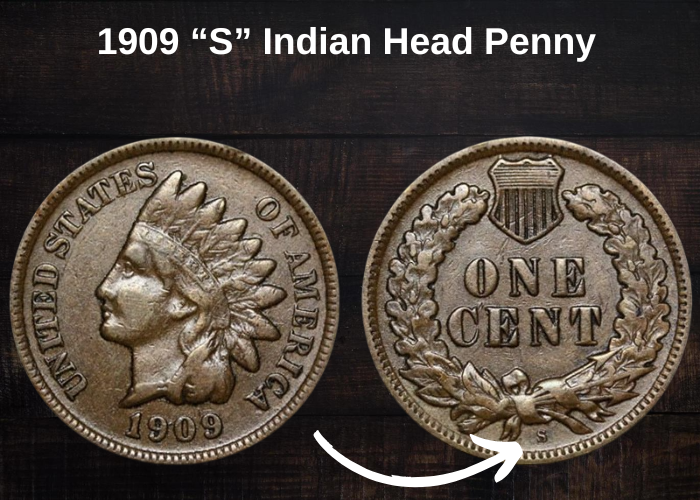
The San Francisco Mint struck only 309,000 Indian Head pennies in 1909, making this the lowest mintage of any regular strike Indian Head penny. Because of this extreme rarity, 1909-S Indian Head pennies are among the most valuable one-cent coins ever produced.
Why Is the 1909-S So Valuable?
- Lowest Regular Strike Mintage – Only 309,000 made.
- Second Year of “S” Mint Mark – San Francisco only struck Indian Head pennies in 1908 and 1909.
- Final Year of the Indian Head Series – This adds extra collector appeal.
- High Quality – Many 1909-S coins were struck with good detail and are well-preserved.
1909-S Indian Head Penny Value Chart
| Grade | Value Range |
|---|---|
| Good (G4) | $350 – $450 |
| Fine (F12) | $475 – $600 |
| Extremely Fine (XF40) | $725 – $1,000 |
| About Uncirculated (AU50) | $1,200 – $1,750 |
| Mint State (MS60) | $2,750 – $4,000 |
| Mint State (MS65) | $12,000 – $17,000+ |
| Mint State (MS67) | $97,750 (record price in 2006) |
The MS67 example that sold for $97,750 at a Heritage auction in 2006 remains one of the most expensive Indian Head pennies ever sold!
Rare 1909 Indian Head Penny Error List
Interestingly, there are no known significant errors in the 1909 Indian Head penny. This is especially true for the valuable “S” mint mark version, as its mintage was extremely low.
Even for the no-mint-mark pennies, no notable production flaws have been identified. As a result, collectors and numismatists primarily focus on the presence or absence of the mint mark and the overall condition of the coin. As we mentioned earlier and as seen in various analyses, the coin’s grade is the main factor determining its market value.
1909 Indian Head Penny FAQ
What makes 1909 Indian Head pennies rare?
These coins are over a century old and mark the final year of the Indian Head penny series. Some versions are especially rare, including the low-mintage proof series and the San Francisco Mint variant with the “S” mint mark, which had the lowest mintage of any regular-strike Indian Head penny.
Is a 1909 Indian Head Penny worth anything?
Yes! Even in poor condition, a 1909 Indian Head penny holds some value due to its age and historical significance. Despite being made of bronze, well-preserved examples can be quite valuable. High-grade coins, particularly those with the “S” mint mark or proof versions, can fetch significant prices and are likely to appreciate in value over time.

